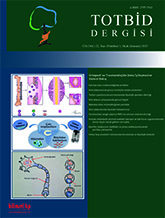
Fracture healing occurs primarily as new bone formation or secondary as callus formation. During the healing process, progenitor cells, osteocytes, osteoblasts and osteoclasts are formed. Under the enlightenment of new technologic advances, new micromolecules that responsible from proliferation, activities and connection of bone cells are defined. These micromolecules are mesenchymal stem cells, bone morphogenetic proteins, hyaluronic acid, prostaglandins and growth factors. These molecules are active in all phases of fracture healing especially in inflammatory phase. On bone cells, there are receptors of these micromolecules and highly expressed in fracture. With the help of these micromolecules, inflammation in fracture region is controlled, new cells especially Osteoblasts are synthesized, new cartilage and bone tissue are formed, and angiogenesis is inducted. Some of these micromolecules are clinically approved and applied and some others are still investigating in experimental studies.